Village life - stories of the people and places that make up Badby
The Post Office
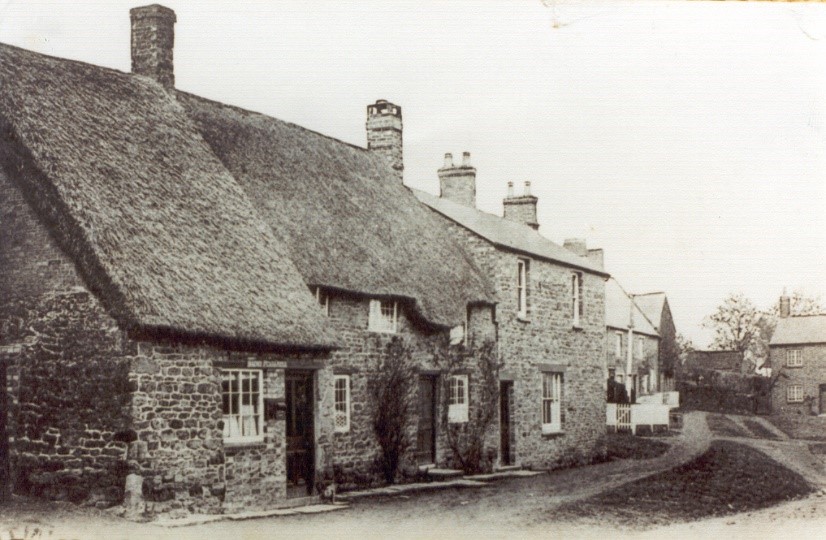
Main Street looking towards The Windmill Inn
(1930s) (photo: HPoB&F, Badby PCC 2012)
Early days: There was a Post Office in Badby well before 1800. The offices were usually in the homes of the post masters or mistresses so have been in many places around Badby. This photo is of an early Post Office near the bottom of Stoneway. The old Police House is half visible in the distance on the right.
In 1901 John Masters was the Post Master and in 1911 Ephraim Cox, the son of the old morris dancer who met Cecil Sharp, was the Post Officer. The son’s grave is in Badby cemetery.
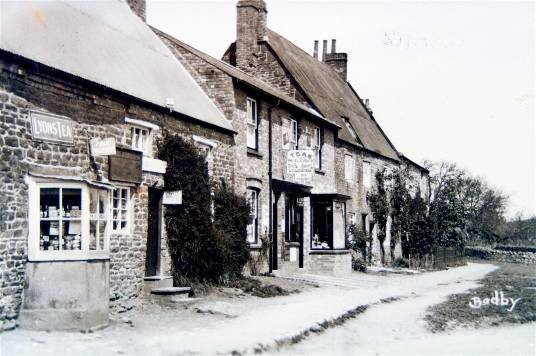
Main Street by Badby Village shop (1920s),
(photo: HPoB&F, Badby PCC 2012)
In the 1950s the Office was run by Mrs Dickinson who also sold stationery and at that time it was near the Maltsters pub down a small alleyway. In this picture, the Post Office is near its final position and there was a café next door. You can see at the back of the picture the wall of Bodkin Park – a privately owned piece of walled land which is part of the Green now.
In the 1960s, the Post Office was in its final location where the telephone box is now. David Hodges and his wife Mary ran Badby Post Office together soon after their marriage when Mary was 27. She had the job of balancing the accounts. Some people couldn’t pay their shop bills as they went along, so paid at the end of the week or the month. There was one afternoon off a week and no holidays. After their daughter was born it was hard work running the business and looking after the baby at the same time.
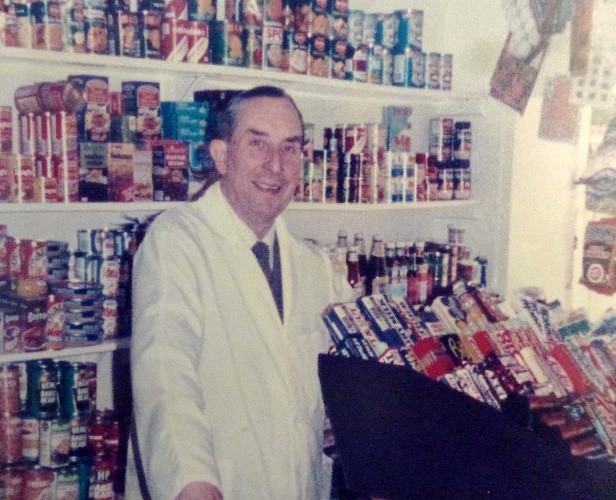 |
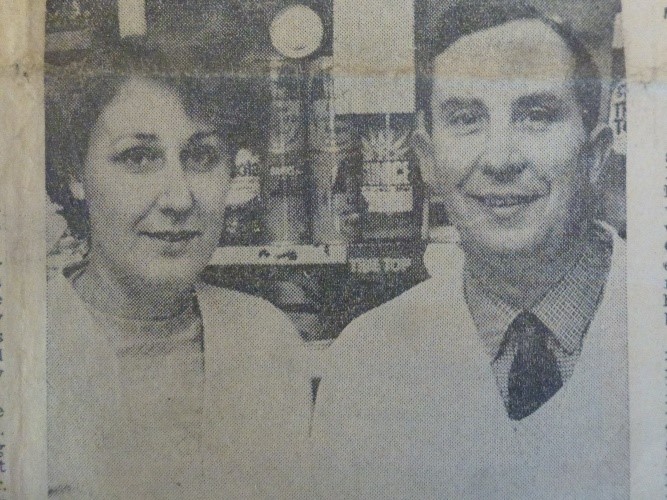 |
| David Hodges in the shop and with his wife Mary (photos: Mary Hodges) | |
Another job was to clean the telephone box which was well used as people didn’t have mobile phones or cars in those days and young visitors to the Youth Hostel often needed to ring their parents.
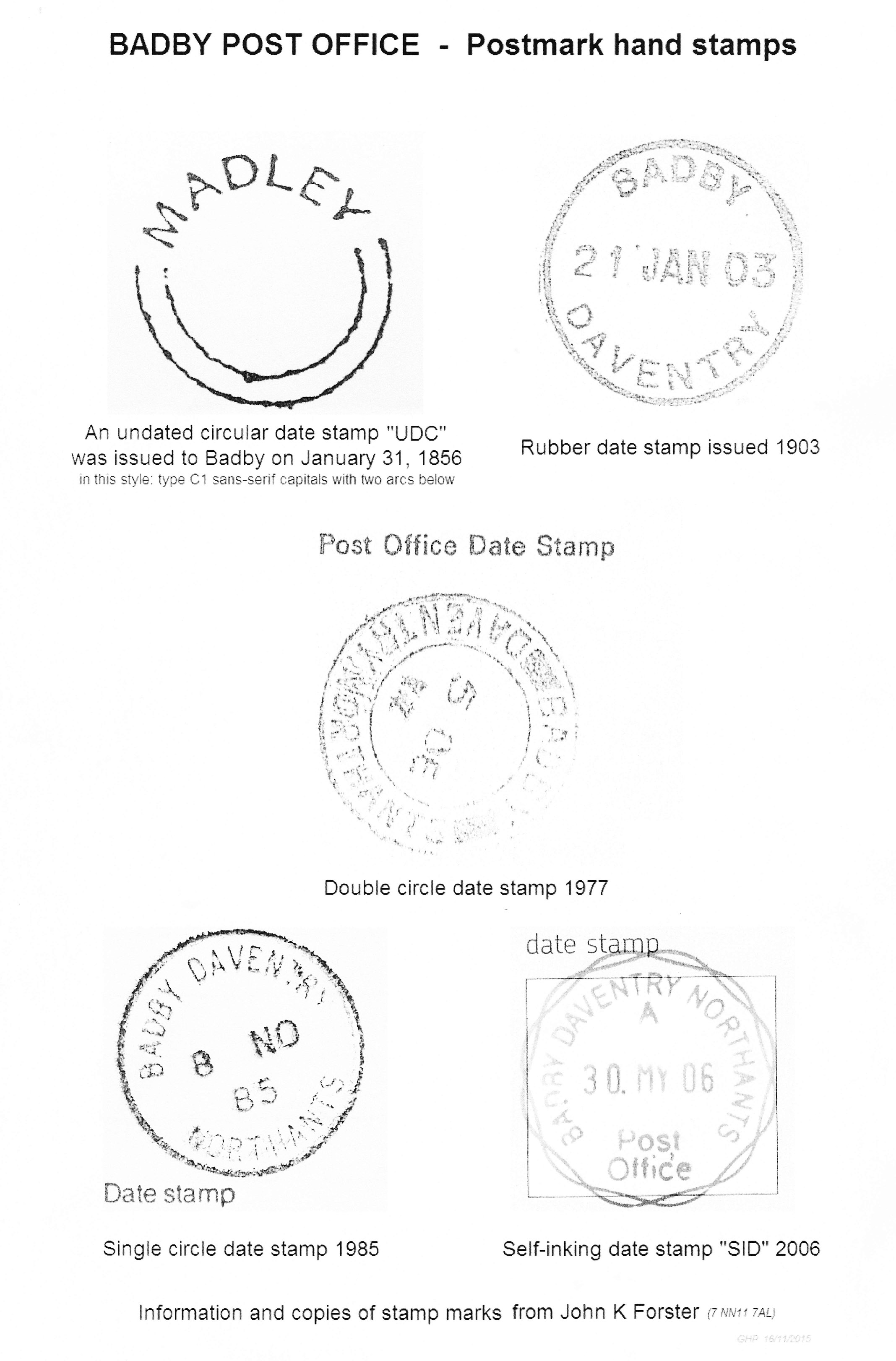
Reproduced by permision of John Forster
David got a licence to deliver milk – about two crates, which he delivered to people round the Green. He was kept busy in icy weather delivering other produce to different parts of the village. He had got some experience in butchery and sold bacon and vegetables too, getting produce from Banbury Market, going to Cash and Carry to buy other things to sell in the shop.
It was an interesting life as Mary got to know all about her customers and the postmen and women became good friends. There was one postie for the village and another went to the farms.
Mary and her husband ran the Post Office from 1960 to 1987 and it was always a successful business during their time there. Later the Gallagher sisters owned the Post Office and a Mr Gunstone bought it from them. He made some improvements to the building.
In the 1990s Sue Thompson was the relief ‘Postie’ for Judy Russell who was the post lady for over 17 years. Sue recorded some of her memories in the local magazine, ‘Village Matters’. These are some of her recollections:
The unsorted mail would arrive in a van from Daventry in 2 to 4 large sacks between 7.30 and 8.30 am. The mail had to be sorted into pigeon holes in a small room at the back of the Post Office where only one person could work at a time. The sorting into ‘walk order’ normally took 2 to 3 hours. There were three ‘walking rounds’. The first one was the Village Green and lower end of the village via Pound Lane taking about one and a quarter hours. The second, taking about one and a half hours, was the upper part of the village via Church Green, Bunkers Hill and Main Street. The third was the middle of the village via the Glebe, Park Close, Chapel Lane and Berry Green Farm and took about three quarters of an hour. The trolley was filled up back at the Office between the rounds.
When there was nobody in to receive registered mail, it was returned to the Office and a note delivered so that the resident could collect their mail from the Office. When there were mail shots which had to be delivered before a deadline, the load was greater as every home had to be visited.
Gill and Jim Douglas from Crick moved into the Post Office in November 1996. They had tried to buy it earlier so were given first refusal by Mr Gunstone. In 1998 Gill was reported to be keen to reopen the tea rooms at the back but sadly, the village Post Office closed on the 20th of March 2008 when Barbara Douglas was the Post Lady.
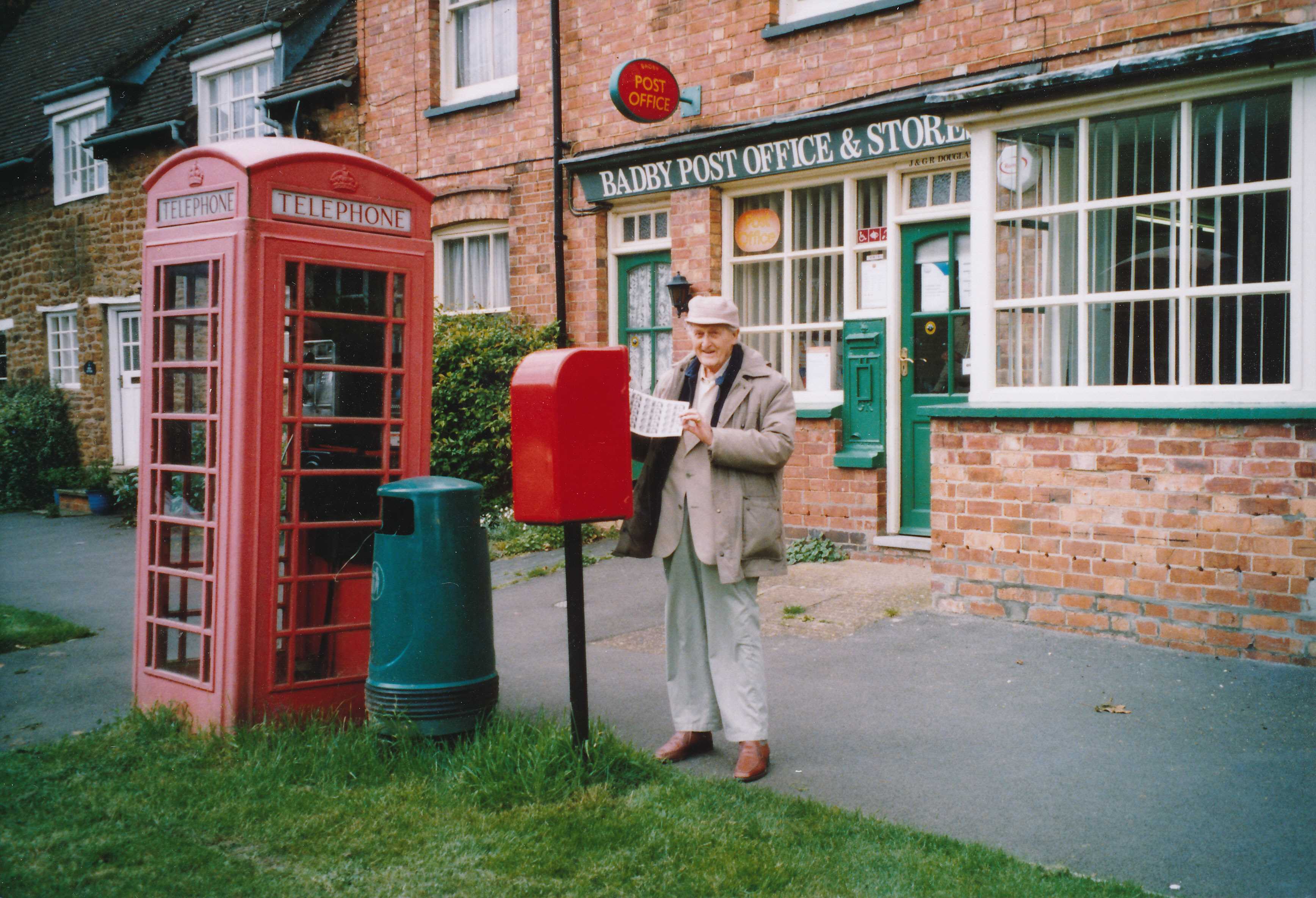
Reproduced by permision of John Forster
The photo on the right shows Badby Post Office and Store on 30th May 2006. The person posting the letter is Ken Forster (1915-2013), who was then living in Braunston with his son John. Ken started collecting postmarks from all over the world when he began his first job as an office boy at a printing company in Leeds in 1930. He wrote four books about postmarks and postal history, and his monthly column on the subject in "Stamp Magazine" ran for 36 years until January 2003. John took an interest in postmarks from the age of 14 and is now the custodian of the family collection.
Nowadays the mail is distributed from Daventry and Melissa Gibbs is our well -respected post lady. She is the first to be given a Post Office van, as the last postman used to drive in his own car to Daventry to collect the mail. There used to be a separate delivery for parcels but now Melissa delivers them as well as the letters. She uses a portable computer/phone which she says is a great help. She does however carry a few copies of the old paper forms in case the technology fails.
Badby Youth Hostel
There was a Youth Hostel in Badby from 1932 to 2005. During that time it occupied three different buildings. Below are extracts from the YHA handbook, describing the properties.
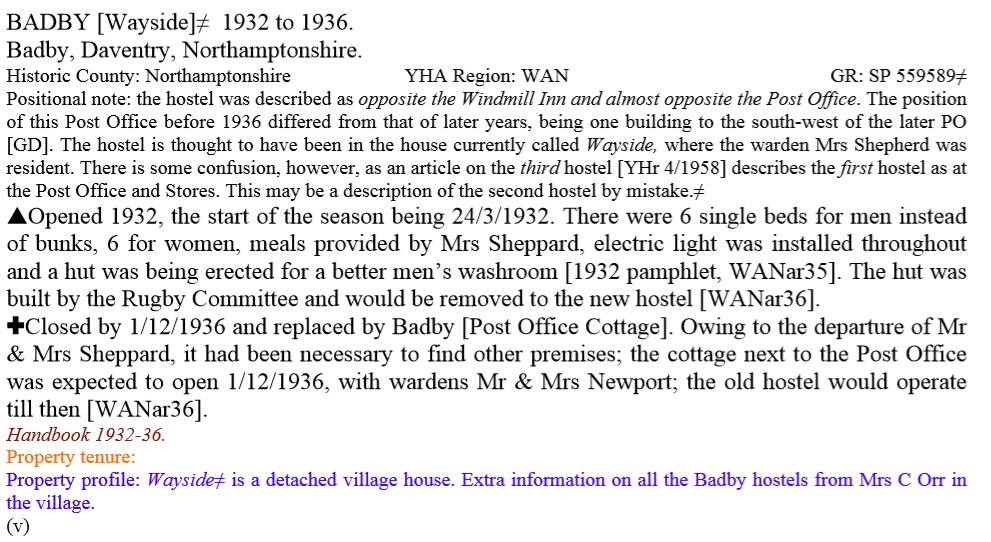
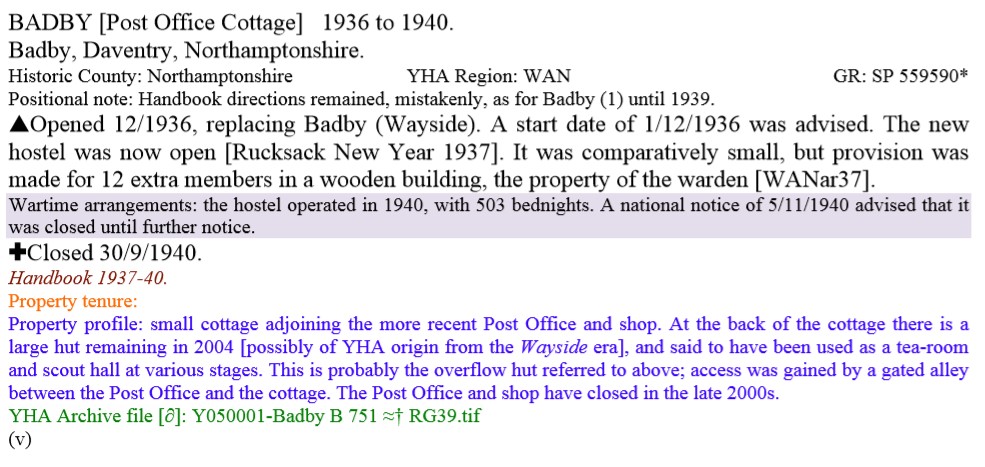
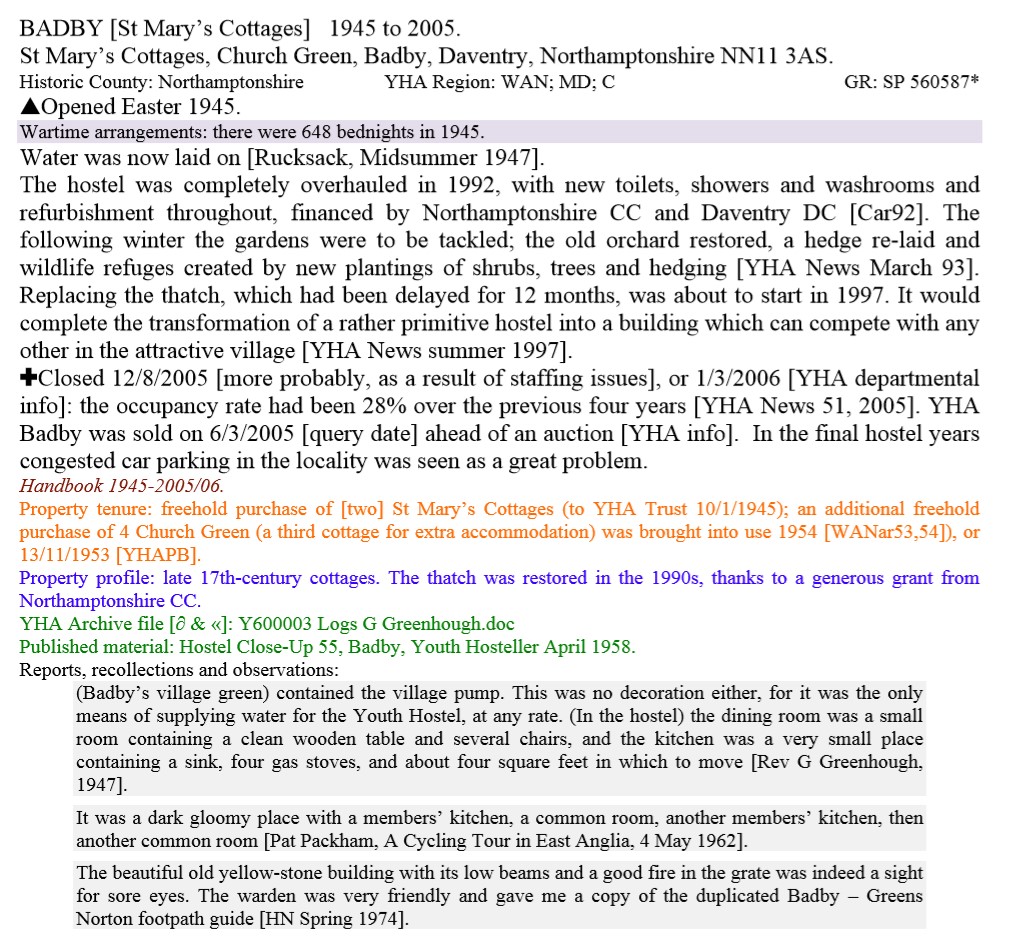
Blundell grandparents & farm
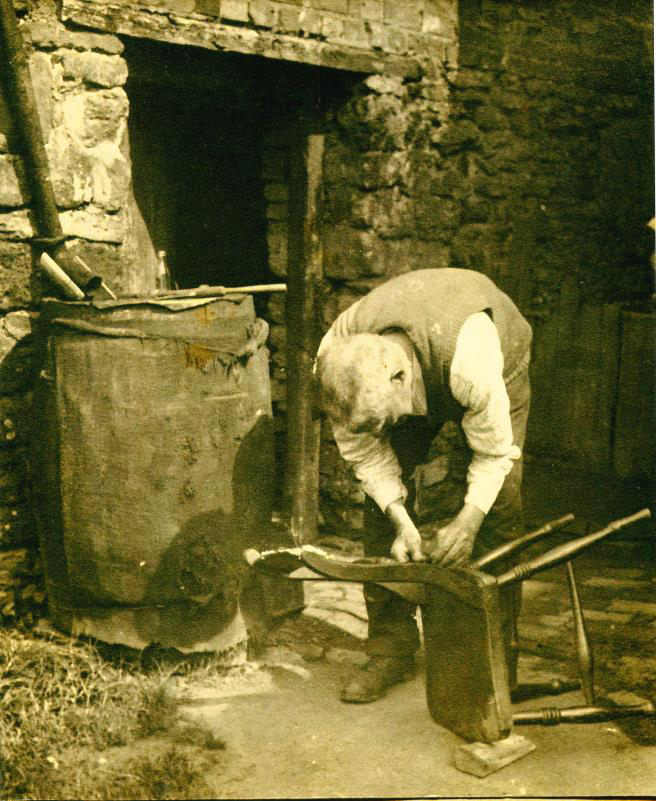 |
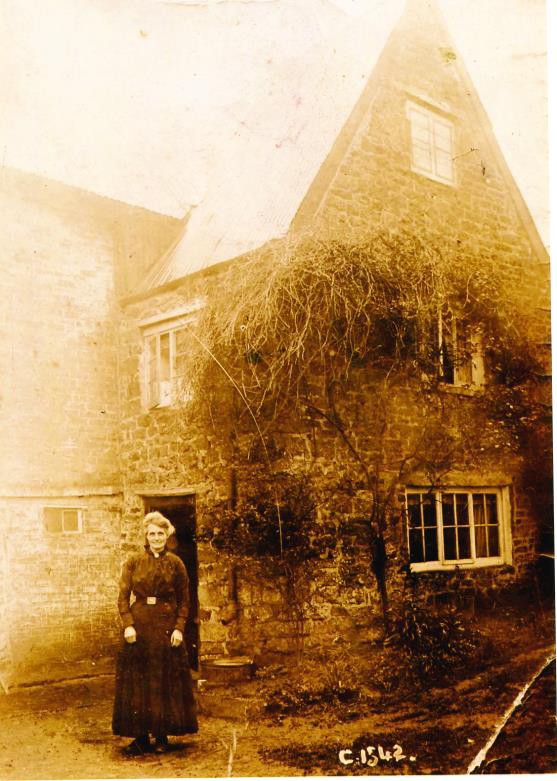 |
| These photographs, kindly shared by David Blundell, show his grandparents. Mr Jack Blundell, known as ‘Pap’ is pictured outside his bakehouse workshop at Church Green, Badby in about 1951. Mrs Annie Blundell, known as ‘Gran’ is shown outside the old bakehouse in about 1937 | |
May Day Celebrations, 1960, by Jane Fletcher and Deborah Chapman
In 1960, our father, Mr F.W. Harrison (Headteacher) and by then Chair of the Parish Council, revived May Day Celebrations in the village after a gap of 26 years.
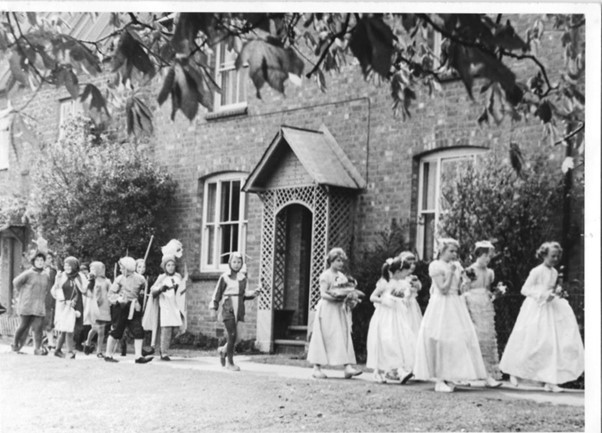 |
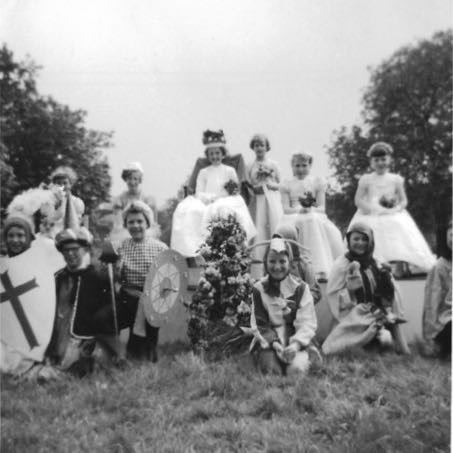 |
| Photos: Jane Fletcher and Deborah Chapman | |
In the morning the Junior School pupils paraded around the village singing English folk songs carrying a garland made by Mrs Clara Shaw, whose mother, Mrs Elizabeth Cox had made the last one in 1934. By 1.30pm “the stage” was set and the Maypole erected on the Green outside “The Laurels”. The cast of the May Queen, her attendants and that of the Mummers Play “St George and the Dragon” then arrived:
- The Queen was Margaret Parratt;
- The attendants were Janet Trotman, Carol Barnstable, Valerie Collins, Maureen Thompson and Linda Darwood.
The cast of the Mummers Play was:
- Jester - Jane Harrison;
- St George - Robert Collins;
- Slasher, the Knight - Graham Parrott;
- The Doctor - Andrew Warr;
- The Dragon - Jill Bull;
- The Clown - Stephen Smith
- Little Jerry Dout - David Fennell
- (The girls cannot remember who played Johnny Jack and Bellsie Bob)
The May Queen was crowned with flowers made by Mrs Harrison and after the play there was Maypole and Country Dancing taught by Miss Mason, followed by Morris Dancing by students of the Abbey School in Daventry. The day ended with everyone present dancing the Circassian Circle and enjoying an afternoon tea provided by the PTA.
Jane and Deborah look back on their childhood with great affection: the freedom they enjoyed in the village and woods in the late 1950s and early 1960s; the happy times they spent with their peers and the many and varied aspects of village life. They remember the excitement of the weekend a Travelling Fair came to the Green with the usual sideshows and swingboats. The sledging on “The Race” in the long winter of 1962/63, when incidentally the school never closed! The Chapel Youth Club where Jane and Mervyn Bull won the Twist Marathon! Most of all, they value how everyone looked out for each other, a tight knit community and home for their formative years.
The Sculpture on the Nene Way
On the boundary between the Badby and Newnham parishes, beside the River Nene, is a wooden sculpture. This sculpture, ‘Source’, was carved from a piece of local fallen walnut by artist Mike Ivens from Long Buckby as part of the Spirit of the Valley millennium project in the year 2000. The 10ft piece of art was made for the Badby Youth Hostel as part of the Northamptonshire Spirit of the Valley project, and is engraved with the letters ‘SOV’ – Spirit of the Valley.
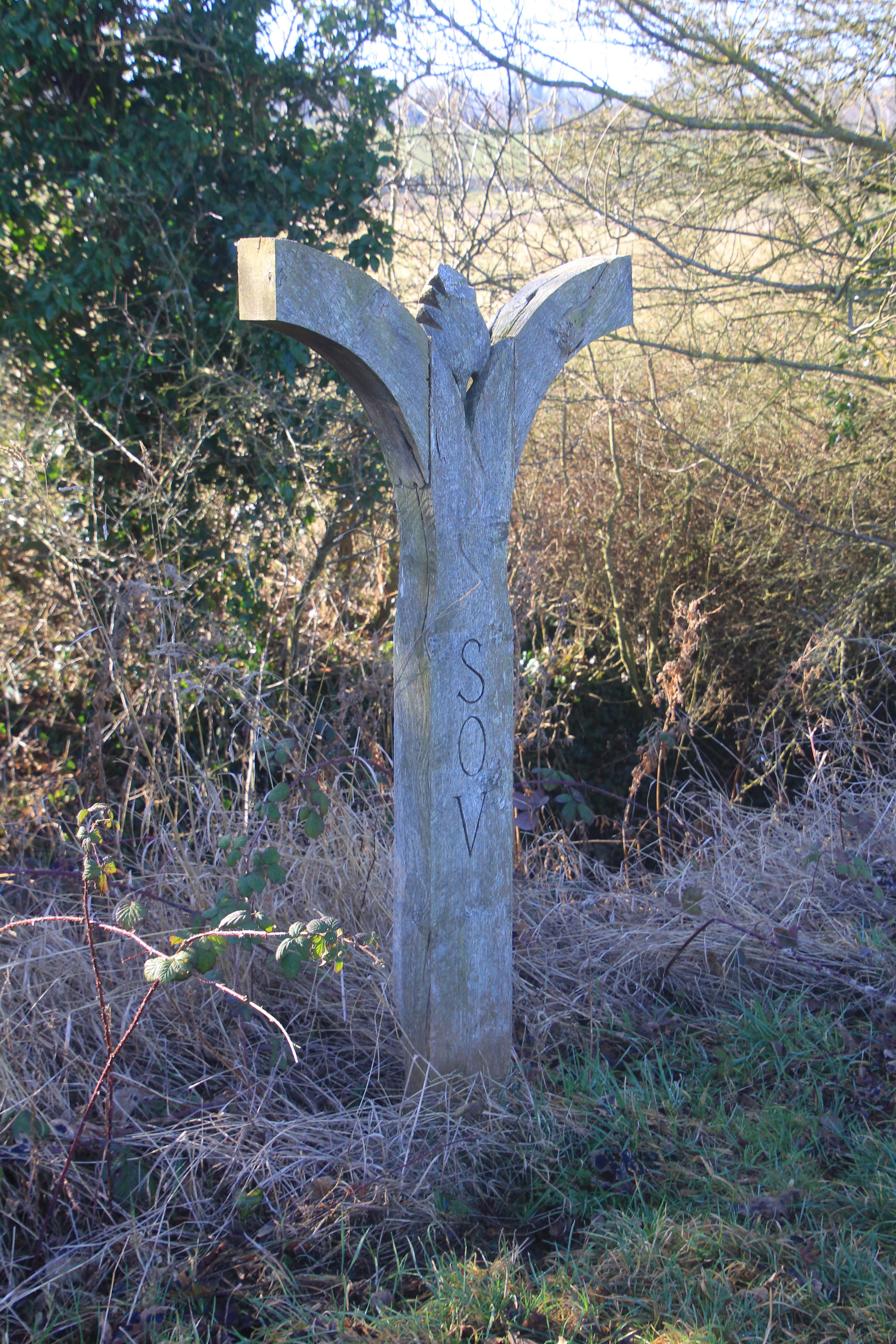 |
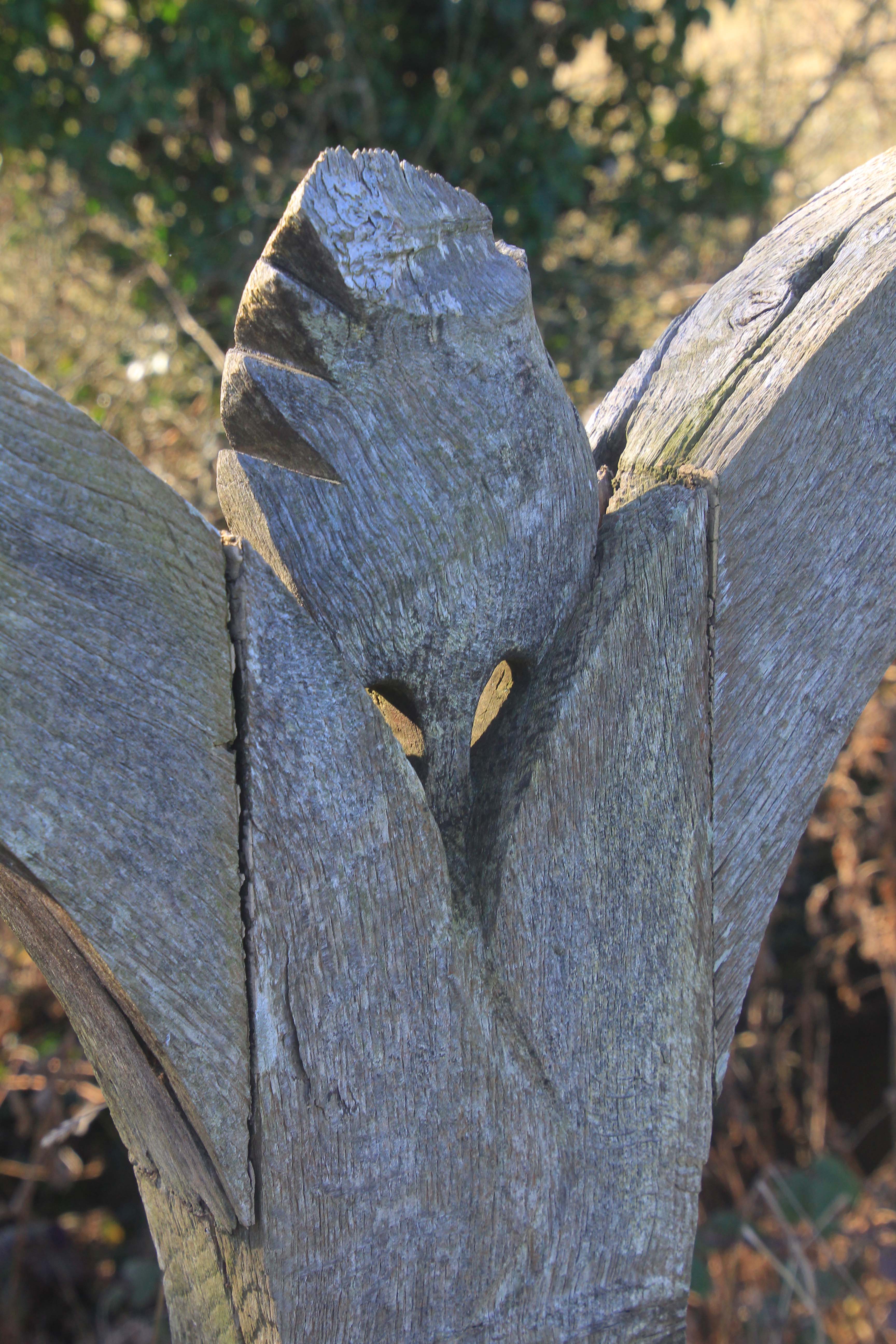 |
| Photographs by Peter Cooper | |
It was first installed in the orchard gardens of Badby Youth Hostel (now Holly Cottage, Church Green) where the sculptor also held a sculpting workshop at the time. Because the Youth Hostel was a grade two listed building, the managers had to apply for planning permission from Daventry District Council. Youth hostel warden Ursula Brendling said: “It was made for the village because Badby was a source of the river. It was made for everybody and they thought rather than put it on the green they would put it in the youth hostel grounds. It has grown on me. It catches the sun in the evening and in the morning.”
Before the Youth Hostel became a private house in 2005, the sculpture was moved into its current position on a local farmer’s land by the River Nene next to the Nene Way (OS Grid Ref: SP 56858 59318) on the boundary between Badby and Newnham. The Head Ranger from Daventry Country Park, Dewi Morris, who lived in Badby, arranged for a group of his staff to move the sculpture to its new position (see Pauline Bird’s account below).
Mike Ivens reports that he also made an oak way marker for Badby at the same time as ‘Source’ to be placed nearby.
Pauline Bird, Newnham, recollects:"What is the curious wooden sculpture beside the youthful River Nene between Badby and Newnham? Yes, I can tell you. This was a Millennium Project funded by The Forum of Art. It represents the ‘Spirit of the Valley’ – S.O.V.
"Badby and Newnham Primary Schools did art work, wrote poems which they sang in school. Richard Campbell helped set them to music. These were later read and sung in the fields.
"Dewi Morris came into school and together we made willow pyramid lanterns. Some made a boat, or more accurately half a boat in Newnham and the other half in Badby. What do you put in a boat, well of course, an owl and a pussycat. (A badger, Newnham school’s symbol, was also made.) Having had to wait for floods to subside, one dark evening both schools processed with lanterns and torches to where both Parishes meet. They sang the songs they had written and then in front of the sculpture released the valley’s ‘Spirit’ by setting the boat, owl and pussycat alight.
"What a great sight to see all their smiling faces in the firelight. They will certainly remember the Millennium."
References:
Northamptonshire Walks leaflet
Northamptonshire Borough Council Development and Framework Masterplan 2005
Daventry
Express 2001
Mike Ivens
Pauline Bird
Last updated 22 December 2022